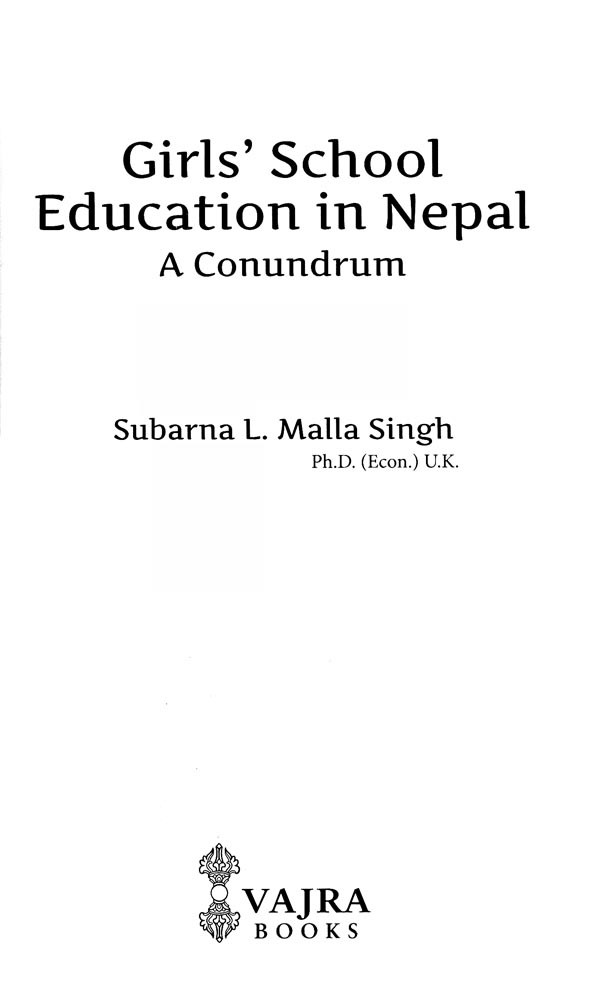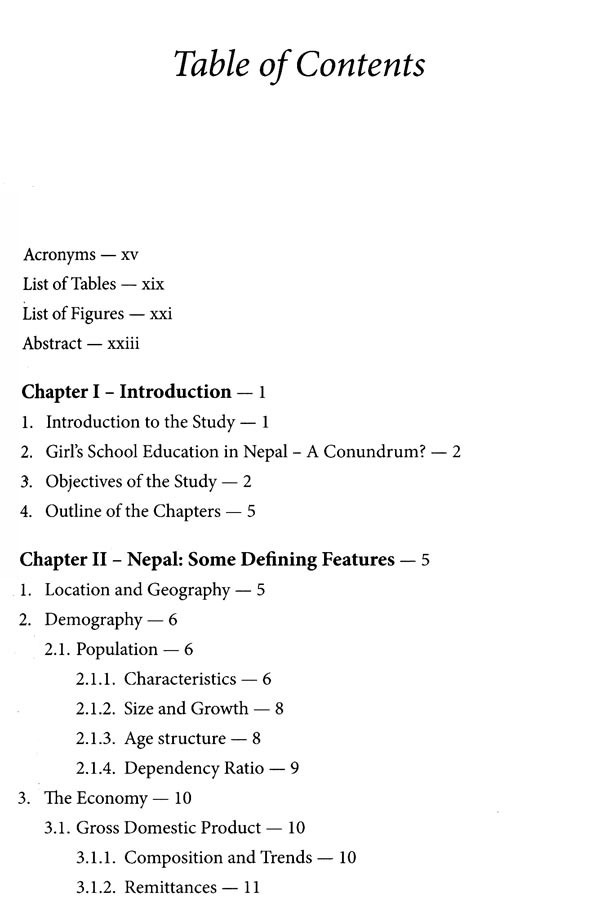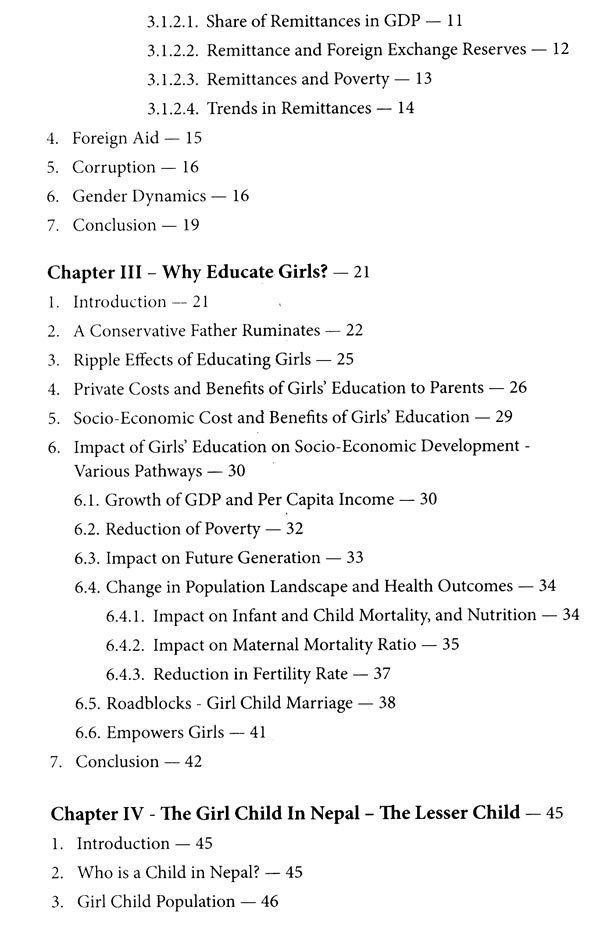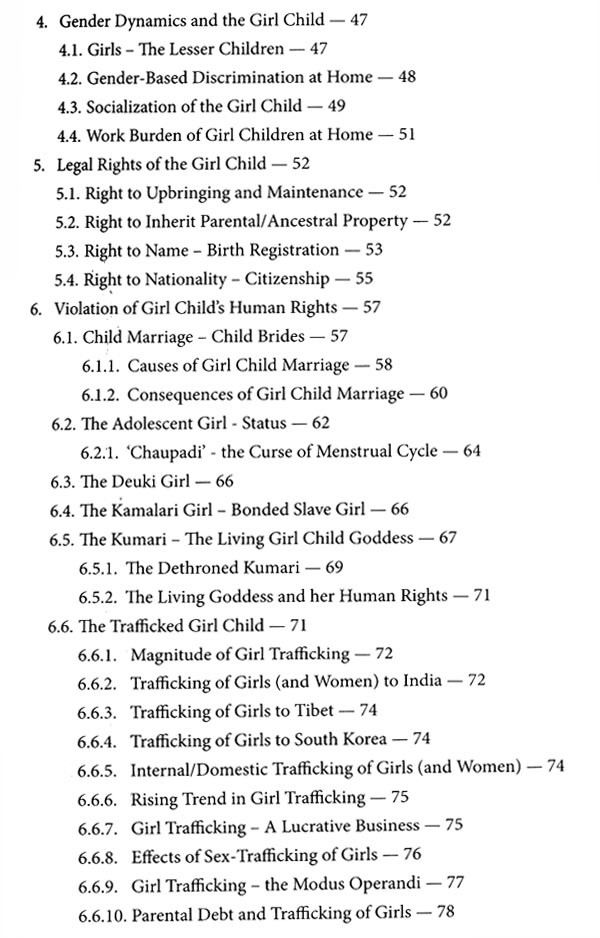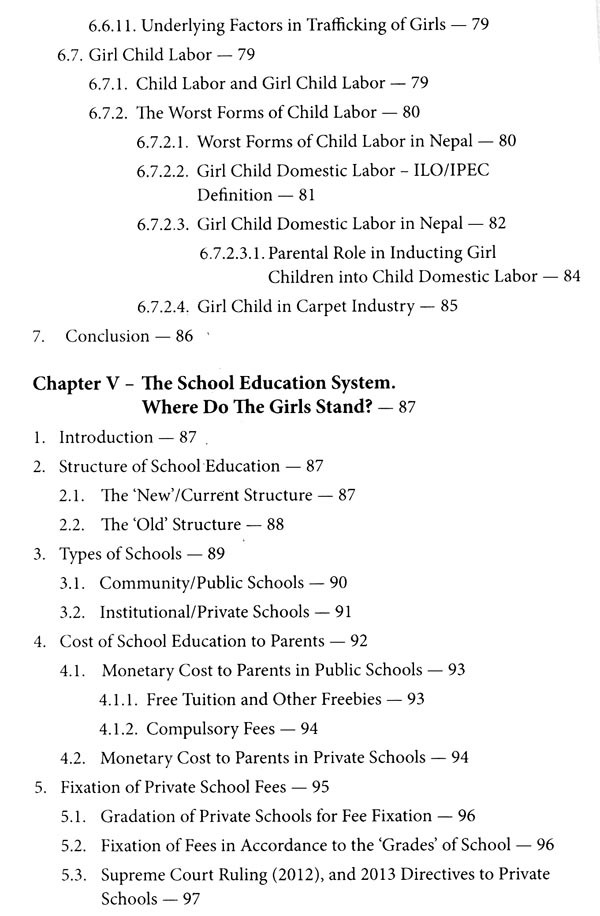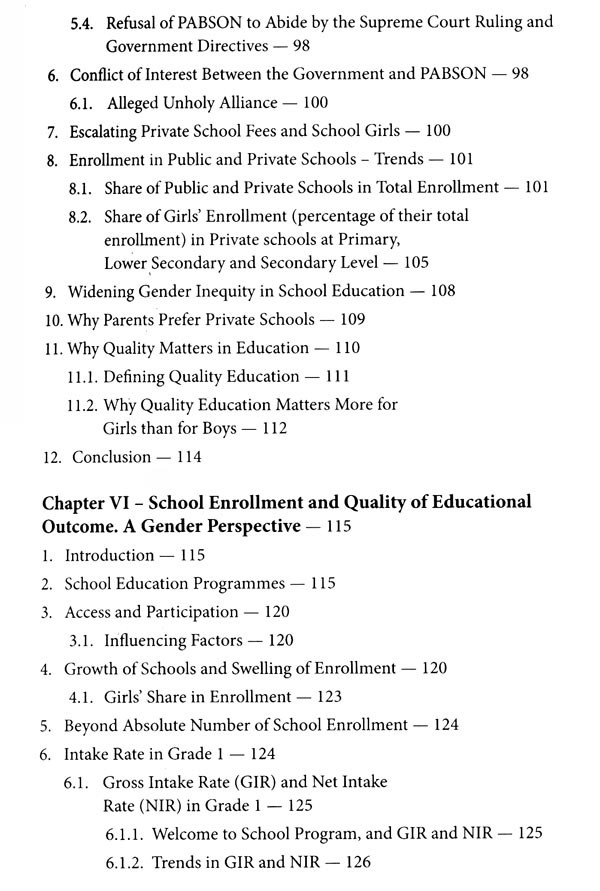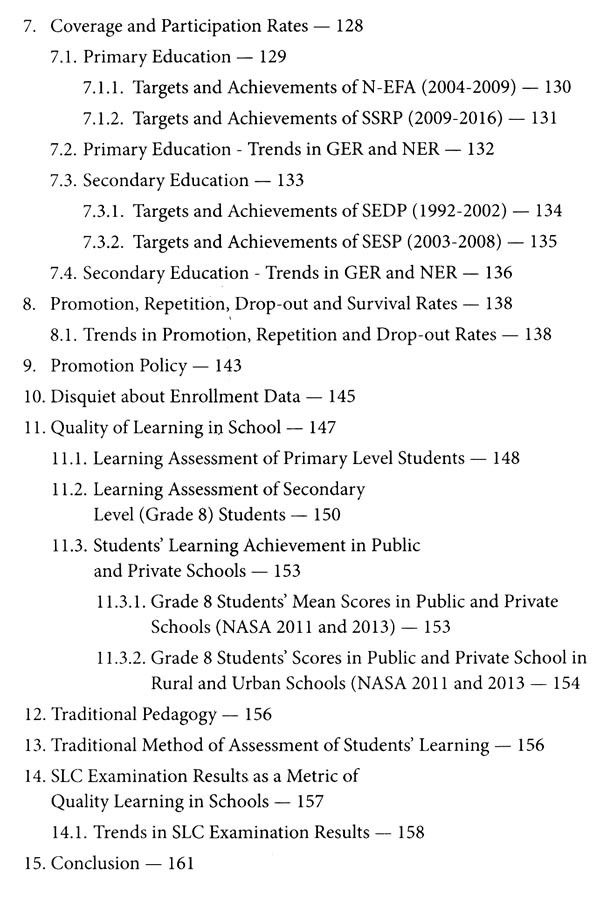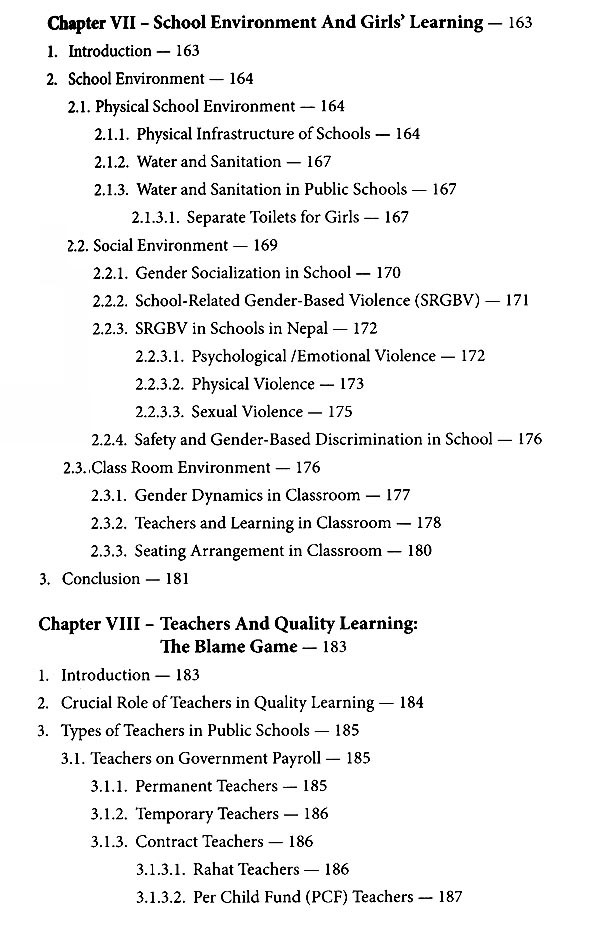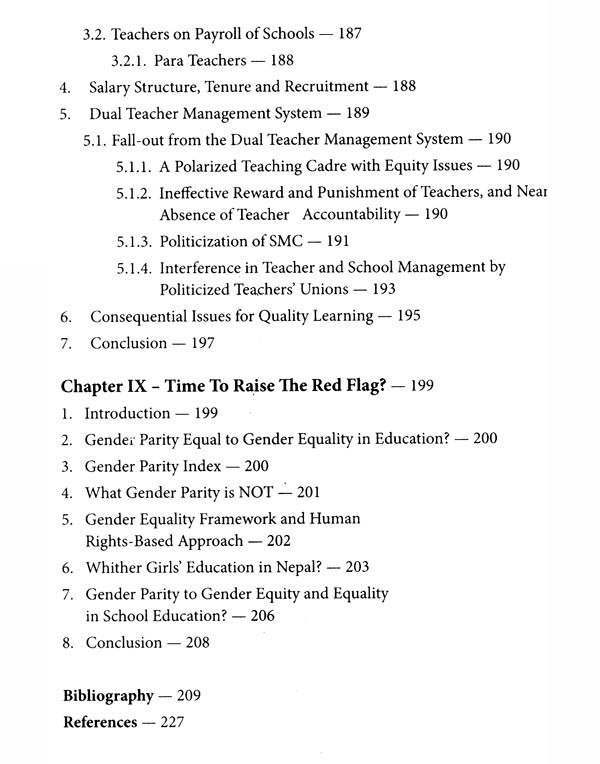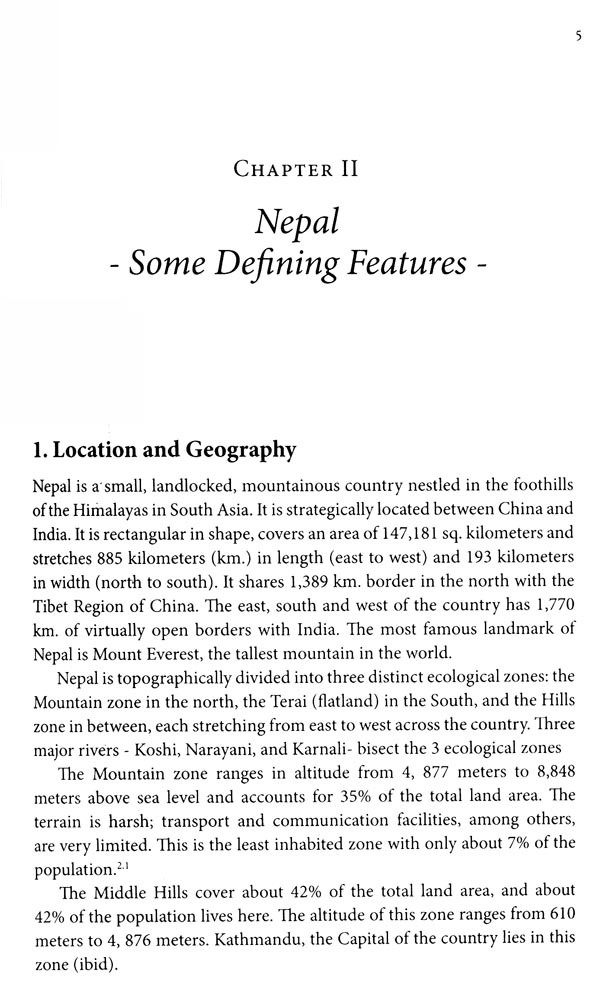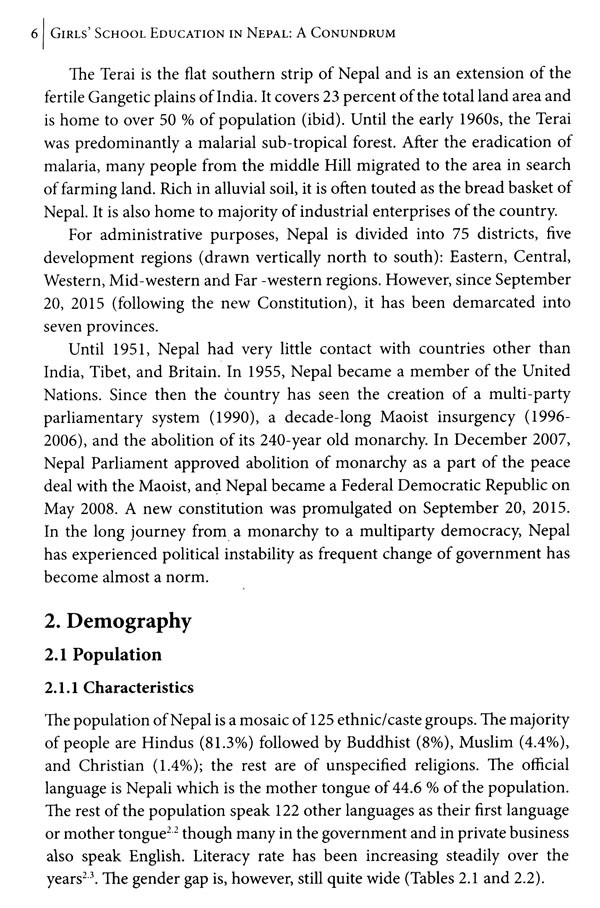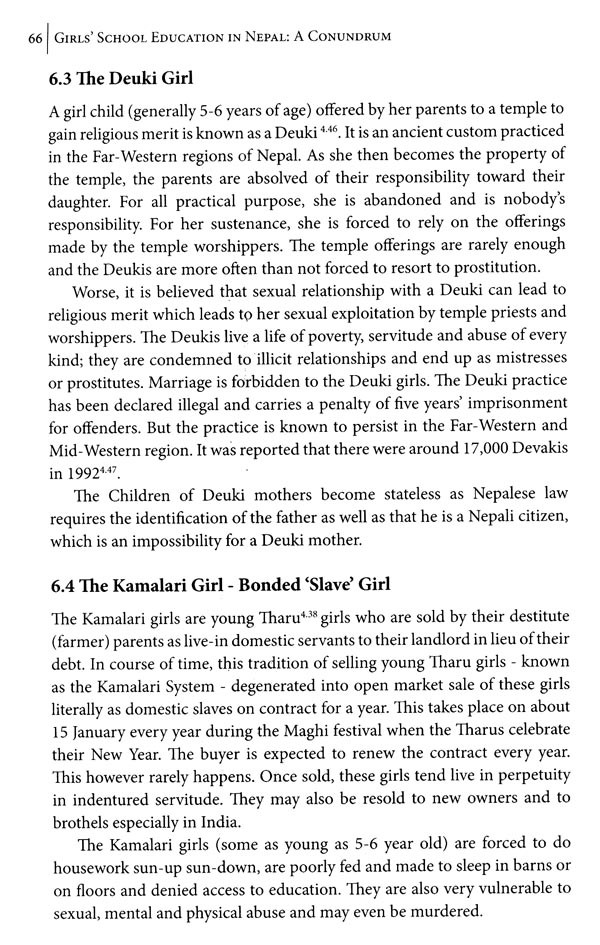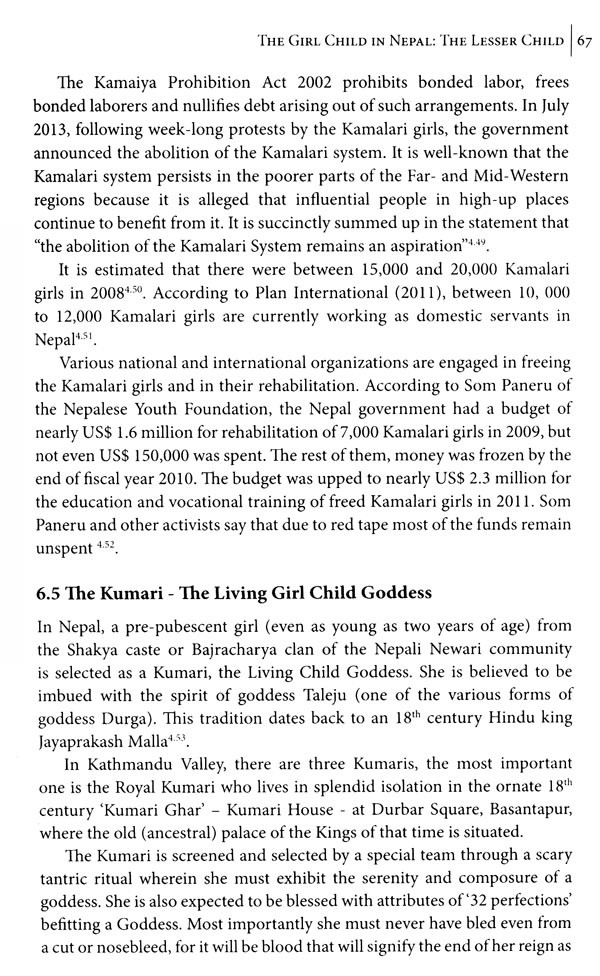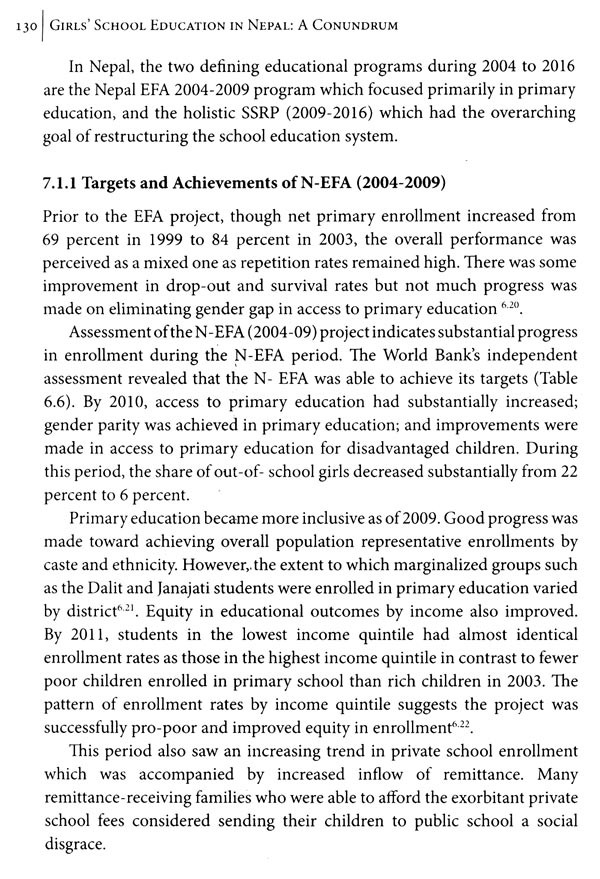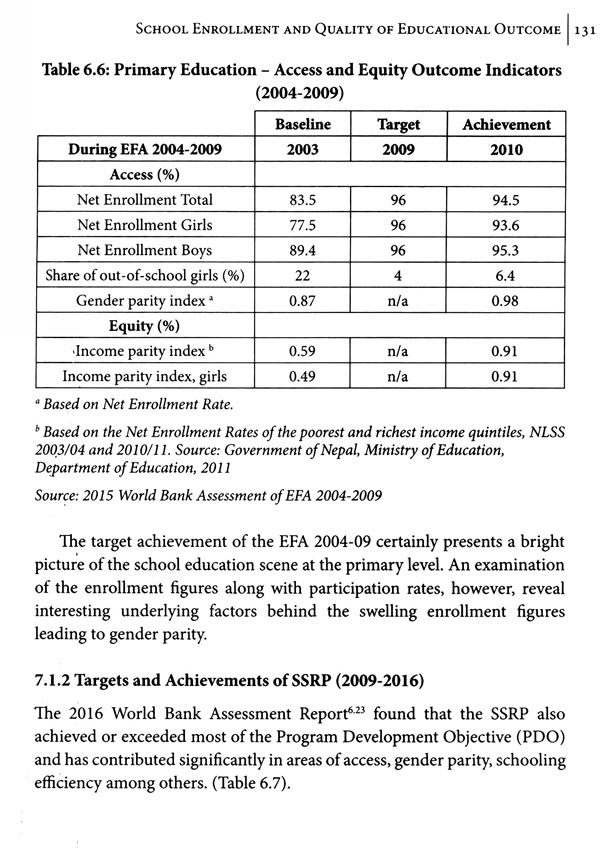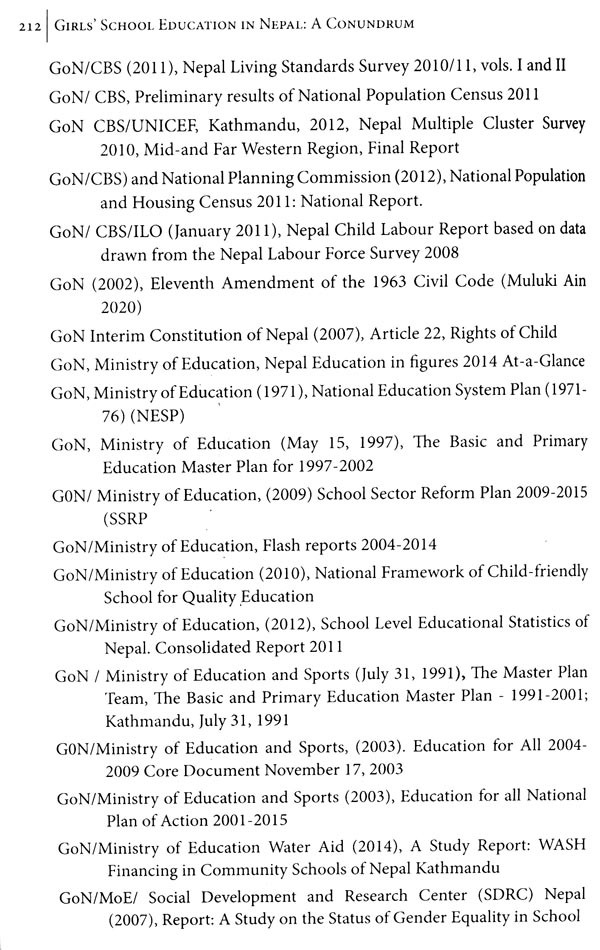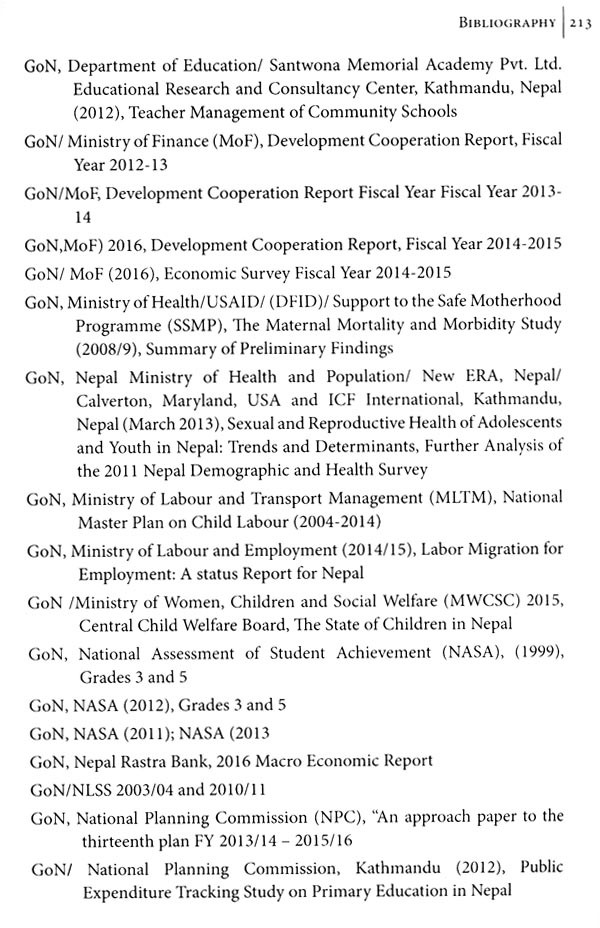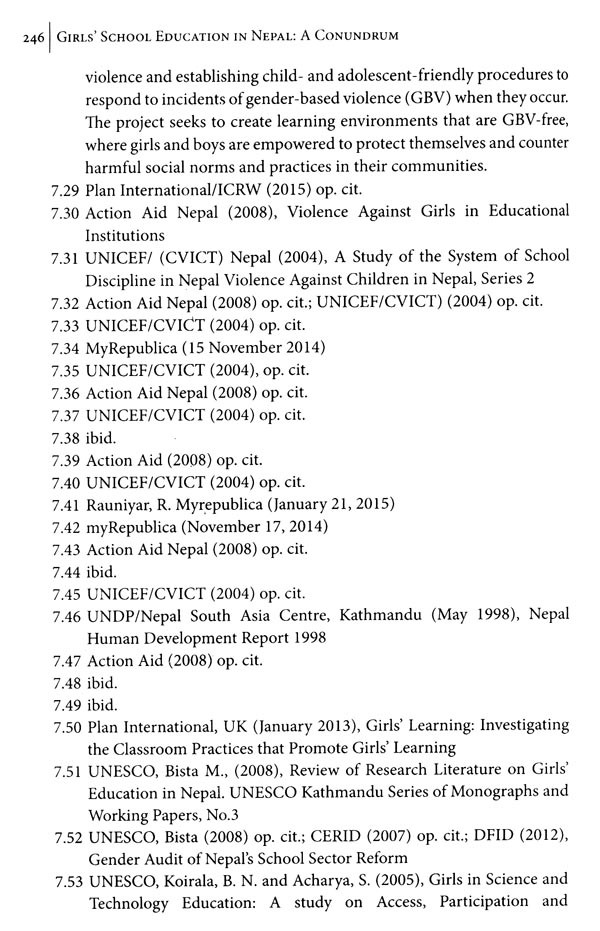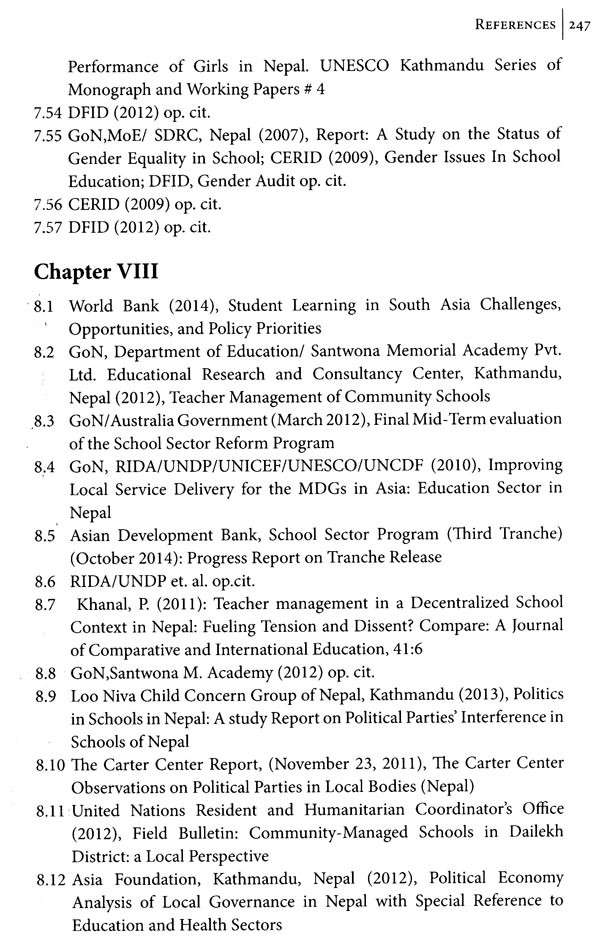
Girls' School Education in Nepal- A Conundrum
Book Specification
| Item Code: | AZG918 |
| Author: | Subarna L. Malla Singh |
| Publisher: | Vajra Books, Nepal |
| Language: | ENGLISH |
| Edition: | 2018 |
| ISBN: | 9789937623933 |
| Pages: | 268 |
| Cover: | PAPERBACK |
| Other Details | 8.50x5.50 inch |
| Weight | 310 gm |
Book Description
A bonus in the book is a thorough account of the life situation of Nepali girl children. This book is bound to lead to soul searching by policy makers, international and national organizations, educationists and WID experts, among others. It is a must-read for those invested in speeding economic development and in empowering Nepali girls.
After graduation, she taught Economics for many years to undergraduates and postgraduate students at the University of Khartoum, Sudan. She has worked as an independent consultant to top notch international agencies, various Nepali Government Ministries and national and international research organizations. She is a Nepali citizen and is a resident in the USA.
It is at the same time cognizant of the fact that Nepali girls are not a homogeneous group. There are young girls and adolescent girls, rich and poor girls, girls in urban and rural areas, in different ecological and development regions, and girls in different caste and ethnic groups. Their life situation and experience in school and classroom cannot be identical as they are inevitably influenced by their geographical location, economic and ethnic status, among others. But a common thread runs through the lives of all these girls. All of them are born and bred in a gender-discriminatory environment, and each and every one's life is brushed and tarred by it. Their life trajectory, options, and opportunities are almost preordained by their gender role which emanates from the patriarchal norms, beliefs and attitudes. The consequent low socio-economic and legal status of girls spill over in their positioning in the school system and in the covert and overt treatment that is meted out to them in school which, in effect, is a gendered institution. The historically disadvantaged life-situation of Nepali girls is rarely factored in the school environment and pedagogy which unwittingly reinforce and perpetuate the uneven playing field of girls.
**Contents and Sample Pages**
